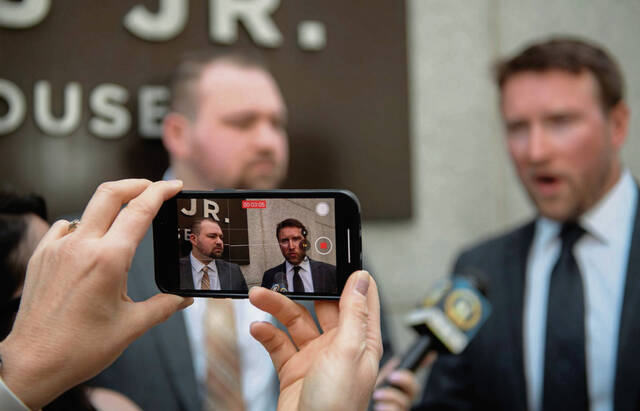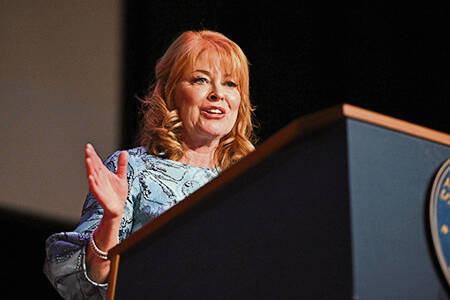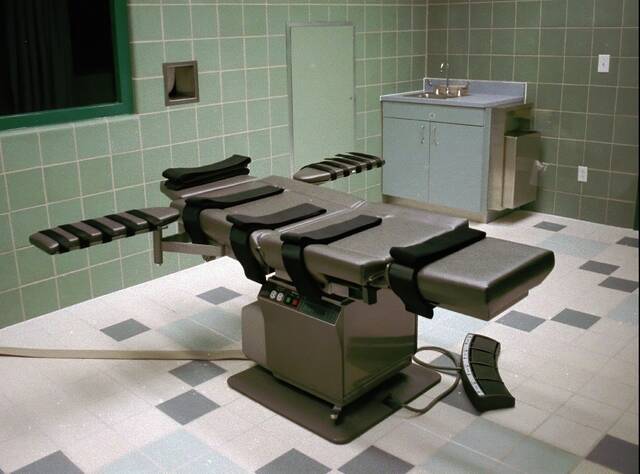When state trooper Harry Gustafson arrived at the Lawrence County farmhouse early Feb. 20, 2009, he spotted a 4-year-old girl standing in the front doorway, crying.
“I bent down to her, and she said, ‘My mommy’s dead. My mommy’s dead.’”
Gustafson picked her up, put her on the couch in the living room under a blanket, turned the TV to “SpongeBob SquarePants” and told her to stay put.
Then, he joined his corporal in the front bedroom of the house.
There, Gustafson said, was 26-year-old Kenzie Houk, obviously dead. Her face was covered in blood, which had pooled all around her head and shoulders.
Sixteen hours later, Jordan Brown, the 11-year-old boy Houk considered to be her stepson, was charged in her slaying. Although his conviction was eventually overturned by the state Supreme Court, it wasn’t until after Brown spent seven years incarcerated.
On Thursday — the second day of Brown’s civil trial against the Pennsylvania State Police troopers who he claims fabricated evidence against him — Gustafson gave to the jury a graphic and disturbing account of what he saw when he arrived to the rented Wampum farmhouse that morning.
The defendants include retired troopers Janice Wilson, Jeffrey Martin, Troy Steinheiser and Robert McGraw, who has since died. They were the lead investigators in the case. Wilson, Martin and Steinheiser are expected to testify.
His testimony, in which Gustafson said first responders initially did not know Houk had been shot to death, was meant to demonstrate, in part, the chaos at the crime scene and the failure to preserve evidence.
When Gustafson and Cpl. Jeremy Bowser entered Houk’s bedroom, Gustafson said, they pulled the blanket back from her body, looking for injuries.
They found none but saw she was pregnant.
“Corporal and I looked at each other,” Gustafson said.
Bowser said, “‘There’s no sense giving her rescue breaths, she’s dead,’” Gustafson recounted.
“I said, ‘what about the baby? I’d rather be safe than sorry. If it was your kid or my kid, we’d be doing it.’”
The corporal conceded, and Gustafson ran out to his patrol car to retrieve a mask and gloves.
Using his hands, he positioned Houk’s head for the mask and breathed into it.
When he did, Gustafson testified, Houk’s stomach gases burst out into his face.
“When it hit me, I’m immediately staggering,” he said.
Gustafson thought he was going to be physically ill and headed to the front door to try to get outside. He braced himself against the door frame, before getting outside and falling to his knees.
“I never actually threw up,” he said. “It probably looked like it.”
He regained his composure and returned inside. A short time later, the ambulance arrived.
Houk was dead, the paramedics told them, and the baby could not be saved.
Then, Gustafson told the jury, they put the blanket back in place.
“We put everything exactly like it was,” he said. “So the investigators could see the scene the way we saw it.”
At first, they thought Houk had hemorrhaged from her pregnancy, Gustafson said.
While they saw the blood, they saw no other wounds and no blood spatter.
It wasn’t until the coroner arrived, he continued, that they learned Houk had been shot in the back of the head.
“We were shocked,” he said, noting there was no exit wound. “We had no idea it was a homicide.”
The scene at the house that morning was chaotic, Gustafson said, and criminal investigators from the New Castle and Butler state police barracks were brought in to assist.
A number of troopers were assigned various tasks, including conducting interviews of people who knew and were close to Houk.
One of those troopers, Bernard Novak, told the jurors Thursday he interviewed Houk’s mother the day of the shooting, as well as a man Houk had once dated and with whom she remained friends.
Although the allegations in Brown’s lawsuit are specifically that the state police did not have adequate evidence to assert probable cause against him, the plaintiffs also are attempting to show the jury the troopers overlooked a prime suspect on that first day of their investigation — Houk’s ex-boyfriend.
The victim’s mother, Deborah Houk, spoke to Novak just after 1 p.m. that day. During the interview, she suggested to the trooper they investigate her daughter’s ex-boyfriend.
She recounted he’d been violent with Houk and pushed her down the stairs.
Deborah Houk told Novak her daughter had obtained a restraining order against him. And, just the night before the homicide, Houk’s parents saw the man at the German Culture Club in New Castle, where the manager asked him to leave.
“He left, and that was the end of the interaction,” Novak recounted on the stand.
He said he did not remember interviewing Deborah Houk and was relying on his report from the time for his testimony.
Throughout his direct examination, Alec Wright, one of the attorneys representing Brown, repeatedly asked Novak if the information he learned from Houk’s mom and friend was essential to the investigation.
With each answer, Novak equivocated.
“I’m not sure of the relevance or importance of that for this investigation,” Novak said of the interaction at the club.
When pressed, he said, “These are all things that could potentially be followed up on.”
Novak said he didn’t remember the state police treating the ex-boyfriend as a suspect so much as a person of interest.
But, later that same day, the ex-boyfriend came up again when Novak interviewed a friend of Houk’s whom she had once dated.
That man also told the trooper, according to his report, Houk’s ex-boyfriend had threatened him, as well.
“‘(He) was calling threatening to kill us, kill me, kill her,’” the witness told Novak, adding, “he beat the hell out of her.”
“According to the two people I interviewed, it was an abusive relationship,” the trooper told the jury.
But, Novak said, he could not recall what he did with the information he learned besides putting it in his reports.
“At some point, this would have been related to the higher-ups,” Novak said, though he could not provide any time frame for when or how that occurred.
Novak also acknowledged he was the one to check on Houk’s ex-boyfriend’s alibi.
No report was written about it, he said, and the only mention of it was a line in another trooper’s report. It read, “talked to (ex-boyfriend’s) father who places him at home at the time of this incident.”
“Why wouldn’t the state police conduct a legitimate interview with the alibi witness?” Wright asked. “Is this sufficient?”
“It’s not my decision to make,” Novak said. “I’m not privy to everything that happened.”
The final witness called Thursday was Joanna Collins, who served in the Office of Special Investigations of the U.S. Air Force. She spent 12 years on active duty and 13 in the reserve before retiring in 2022 as a colonel.
Collins testified as an expert in child interviewing.
As part of her work for the plaintiffs, she said, she reviewed the investigative case files, including reports, depositions and recorded interviews to make a determination as to how the interviews of the children, including Brown, were handled.
“They were not conducted in accordance with best practices as established at that time,” Collins said.
She told the jury an effective interview of a child is non-leading and non-suggestive.
“Ideally, you attempt to do just one interview,” she said. “It’s not intended to be duplicative. You don’t ask the same questions over and over again.”
In the case of Houk’s 7-year-old daughter Jenessa, state police interviewed her four times in the 16 hours after Houk was killed.
None of the first three interviews were recorded, and, because of that, Collins said, it is impossible to conclude whether troopers followed accepted protocols, including what questions were asked or what else might have been said.
In the first two interviews with Jenessa, the little girl reported nothing unusual happened that morning.
She told police Houk woke the kids up for school, and, after they were ready, told Jenessa and Brown to leave so they didn’t miss the bus.
“It was probably a typical morning — nothing out of the ordinary, no loud sounds,” Collins said.
Between Jenessa’s second and third interviews, about 10 p.m., Brown was interviewed for a second time, Collins recounted. It was during that interview that he told detectives he owned a youth-model .20-gauge shotgun and a 30-30 rifle.
Then, in Jenessa’s third interview at midnight, the 7-year-old recounted for the first time seeing Jordan with two long guns that morning.
“In the two previous interviews of Jenessa, she made no mention whatsoever of the weapons,” Collins said.
By the fourth, the girl recounted hearing “a big boom.”
Collins said it would have been logical for Jenessa to have reported hearing the big boom earlier in the day, but she did not.
Collins also noted the fourth interview of Jenessa — the one that was just under 4 minutes long and audio recorded — didn’t conclude until 12:20 a.m.
Five minutes later, a magistrate judge signed a search warrant in the case citing “the big boom.”








